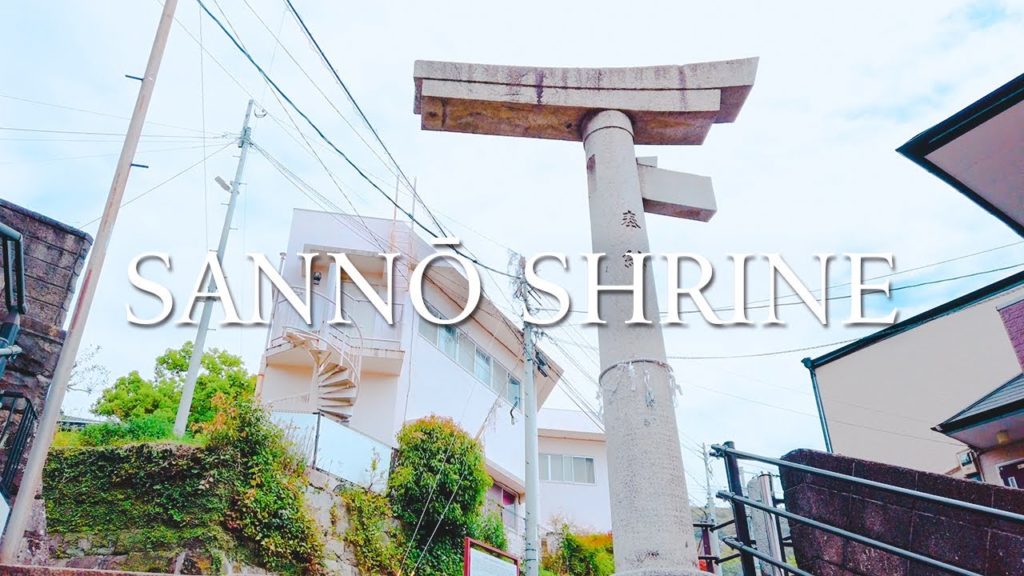Walking Tour the beautiful Sannō Shrine in Nagasaki, Japan.
Join the channel by subscribing:
Sanno Shrine was exposed to the atomic bomb on Nagasaki City because it was located about 800 meters from the hypocenter, and the one-poster torii that leaves its mark and the greenery that is almost naked due to heat rays. Famous for Kusunoki who has regained.
The one-legged torii stands with one pillar blown off by the blast of the atomic bomb at the shrine (the collapsed part also exists on the side of the approach), and it is said to be an existing atomic bomb-bombed building. It has become.
The surrounding area became a burnt field due to the dropping of the atomic bomb, and the four torii gates collapsed, leaving the first torii gate and the second torii gate, but the first torii gate was intact and the second torii gate was twisted by one pillar far from the blast and the blast. He stood leaving half of the torii with a slightly different angle. Also called “one-legged torii”.
The A-bombed camphor trees are two camphor trees that stand facing north and south at the entrance to the precincts of Sanno Shrine. Both trees are taller than the trunk circumference because the upper part of both trees was lost due to the blast of the atomic bomb. The trunk skin is burned by the heat rays and traces can be confirmed.
In 1969 (Showa 44), it was designated as a natural monument of Nagasaki City as a “Sanno Shrine’s large camphor tree” because it has great significance not only as a giant tree but also as a tree that survived the atomic bomb. In 1996, it was selected as one of the “100 Soundscapes of Japan” by the Ministry of the Environment as “Sanno Shrine A-bombed camphor tree”. In addition, the Nagasaki Atomic Bomb Museum, student circles, civic groups, local elementary schools, etc. are conducting activities to donate the “A-bombed camphor tree II” grown from the seeds as a symbol of peace at home and abroad.
———————————————
山王神社は、長崎市への原子爆弾投下において鎮座地が爆心地から約800メートルの地点に位置したために被爆し、その跡を残す一本柱鳥居や、熱線により裸同然となりながらも豊かな緑を取り戻した楠で有名。
一本柱鳥居(二の鳥居)は、神社の二の鳥居は原爆の爆風により片方の柱が吹き飛んだ状態で立っており(倒壊部分も参道脇に現存)、現存する原爆の被爆建造物となっている。
原爆投下により周辺は焼け野原になり、4基あった鳥居も一の鳥居と二の鳥居を残して倒壊したが、一の鳥居は無傷で、二の鳥居は爆心から遠い片方の柱と爆風によりねじれて角度がわずかに変わった笠石の半分を残して立っていた。「片足鳥居」とも呼ばれる。
被爆楠は、山王神社の境内入口に南北に向かい合って立つ2本の楠。両木とも原爆の爆風により上部が欠損したため、幹周に比べると樹高が低い。熱線により幹肌を焼かれ跡も確認できる。
巨樹としてのほか原爆生き残りの樹木としての意義も深いと1969年(昭和44年)に「山王神社の大クス」として長崎市の天然記念物に指定され、境内を通る風で起こるその葉音も1996年(平成8年)に「山王神社被爆の楠の木」として環境省の「日本の音風景100選」に選ばれている。また、長崎原爆資料館や学生サークル、市民団体、地元小学校等がその種子から育てた「被爆クスノキ二世」を平和の象徴として国内外に贈る活動を行っている。
#長崎
#nagasaki
#japan


AloJapan.com